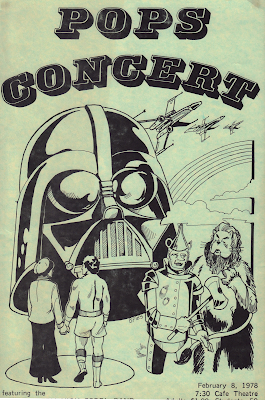 |
| Related? |
I've been corresponding with a professor who's writing a paper on "intermediality," or how different media connect, combine, and cross-pollinate. As part of our ongoing discussion, she asked me, "Is it possible to unravel the web of media that influences your work or your storytelling style?" I liked my answer well enough that I asked her if I could share it here. She said I could so I am (lightly edited):
We are all the sum of our influences and nobody creates in a vacuum. I don’t think it’s possible to “unravel the web of media” that influences my storytelling, but there are times when I’m consciously aware of them. They are tools in my toolbox.
I have thought things like, “I could pace this like a Hitchcock scene,” or “I could compose this like a Wyeth.” Part of the job of making comics is understanding the language of visual storytelling: how and why some compositions and sequences of images evoke moods, emotions, or a sense of time or place that the reader may not even be consciously aware of.
I think a big part of one’s individual style comes from curating influences and making connections that other creators wouldn’t obviously make. Sometimes it's a song; pop lyrics are terrific at economically capturing a character or situation. When I do a drawing in one-point perspective with the vanishing point on a character at the center of the image, I know I’m using a tool that was used by Leonardo DaVinci in “The Last Supper” and Stanley Kubrick in “2001: A Space Odyssey.” Other artists have other tools.
Not that every panel is so precious. Sometimes, honestly, you’re just trying to tell the story any way you can. I once heard cartoonist Justin Green say, “The dirty secret of comics is that a lot of it involves copy fitting,” which I thought was hilarious and true. You can employ all the theory and obscure influences you want, but sometimes you just have to cram the words and art into a tiny box.
Almost all cartoonists (and, by extension, I’d say almost all writers, artists, musicians, etc.) begin by imitating others they admire. My cartooning influences go back a century, and include both comic books and comic strips. There are some things I’ve drawn that are deliberate echoes of a particular page of a particular comic that was published in 1967. I bet nobody else has that tool!
Style emerges when all the influences blend together into an unrecognizable amalgam that becomes yours. One reason I always encourage young cartoonists to draw from life as much as possible is to help them develop a unique, less derivative style. There’s no reason or excuse to draw a hand in the style of Jack Kirby, Carl Barks, Herge or Tezuka when you have a perfectly good hand attached to the end of your own arm. Draw that.
I also encourage cartoonists to read widely and be curious about life outside of comics. Comics made by people who’ve read nothing but comics are usually much less interesting than those by people who know history, science, philosophy, or whatever peculiar interests and knowledge they bring to the work. I always say that if you have a passion for collecting bottle caps, and can write or draw something that makes me care about bottle caps as much as you do, I will be your fan for life.
Style sneaks up on you and evolves. For a long time, you can look at your own work and see its influences, and then one day, without realizing it, you can’t. It’s just yours. My style is different than it was 10 or 20 years ago—perhaps not in ways that would be apparent to a reader, but are obvious to me. Learning and improving is the goal. Part of that process is remaining open to influences and intelligently incorporating them without imitating them.





















